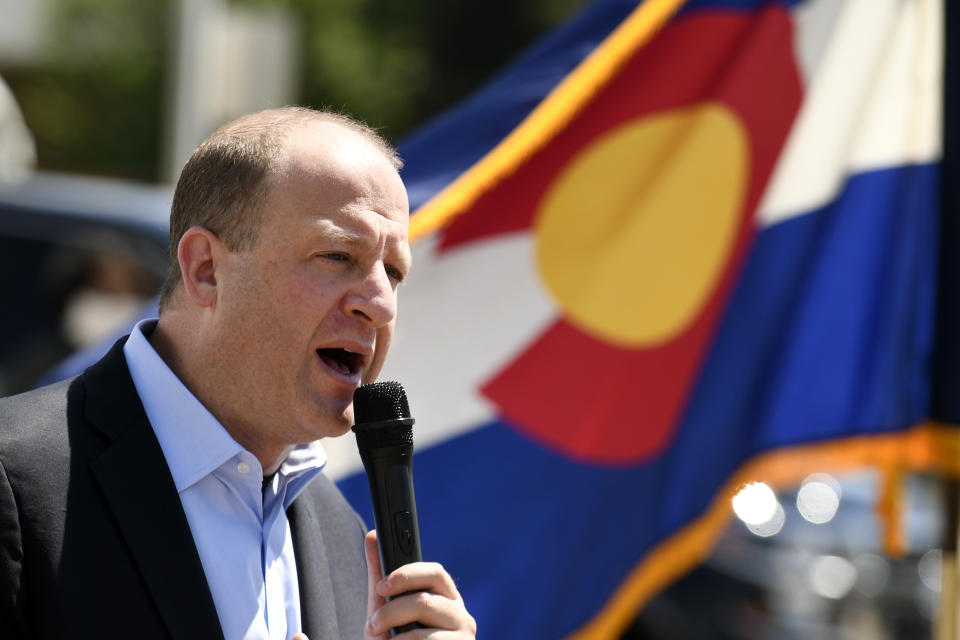Why the ‘statewide IRA’ could be a way to lessen the racial retirement gap
A key aspect of the racial wealth gap is the gap in access to retirement accounts.
Far fewer workers of color can put money away through an employer-sponsored account compared to their white counterparts. This stems in large part from the fact that many Black and Hispanic workers are often in lower-paying jobs that don’t offer a retirement plan.
According to Federal Reserve data, 36% of working Black households have no money saved for retirement. The figure for Hispanics is 39%. Only 21% of white households are in the same situation.
The differences add up over decades. White families have about six times as much saved compared to Black and Hispanic families.
“The reality is for many Black retirees, Social Security becomes their main source of income in retirement,” says J. Michael Collins, the director of Wisconsin’s Center for Financial Security. “That's not really enough.”

One oft-cited way to address the problem is increased access to 401(k)s. Another step in the right direction could be the relatively new programs being implemented in a few states to offer automatic retirement savings options to workers whose employers don’t offer one.
“The way that you build significant retirement savings is to invest over decades,” says David John, a senior advisor at the AARP, noting that many states are “still at the starting stage, but in the long run, the state programs are likely to have a major impact on the ability of people of color to save.”
The ‘statewide IRA’
California, Illinois, Oregon, and – just this month – Colorado have programs in place requiring employers above a certain size that don’t offer their own retirement plans to enroll in a government program that allows their employees to begin automatically putting some of their paycheck away.
“The data and science show this approach will increase the number of savers early in their careers, and they will be better prepared for retirement,” Colorado Gov. Jared Polis reportedly said this week upon signing the new program into law.
“That's going to help,” says Collins of the new Colorado plan. He appeared as part of Yahoo Finance’s ongoing partnership with the Funding our Future campaign, a group of organizations advocating for increased retirement security for Americans.

Katie Selenski runs California’s program, called CalSavers. Selenski estimates that there are about 7 million people in her state who will be eligible for the program as it rolls out in the coming years. Based on a 2016 feasibility study, she says of that population, "two-thirds are people of color.”
The plans aim to eventually include nearly all businesses in their states with some exceptions. For example, Colorado and California’s programs will impose more mandates in coming years until they encompass every business with more than 5 employees. Colorado’s program offers an auto-IRA, where employers automatically enroll workers and set up payroll deduction.
“I think we automatically are serving the needs of a diverse population,” Selenski says.
The ‘auto IRA’
Economists have been pushing plans that allow workers to automatically funnel more money into savings plans for years. David John, of the AARP, was one of the architects of the idea.
When he was developing the initial idea, John had in mind helping 5 groups in particular: young people, people of color, small business employees, lower-income people, and women. "So basically, if you're a young Black woman who is working for a small business, you've pretty much hit the trifecta there," he says.
In 2008, John’s idea was endorsed by both President Barack Obama and Sen. John McCain and, since then, some states have been implementing programs.
[Read more: Cashay: What are IRAs?]
Oregon’s plan began in 2017. Illinois had the first wave of its program in place a year later. California is still getting its effort underway in earnest this year. The idea in all three states is that workers are able to begin saving automatically – as you can do some traditional employer-sponsored 401(k) plans – and then keep saving with every paycheck.
Anyone can, of course, go to a bank and open an IRA account. But, as John says, he confirmed during his research, many workers without access are nervous about the financial lingo they don’t know and "look at those fancy lobbies, and think, ‘Well, this really isn't intended for people like me.’”
“Everything that we do here in the design and operation of the program, is done to make saving easier and more attainable for those underserved workers,” says CalSavers’ Selenski. The program includes features like accessibility in multiple languages, a ROTH IRA structure, and the inclusion of gig economy workers as part of their effort to reach a wide audience.
“It's probably going to take, for most people, a decade or more before they can come up” with significant savings, says John. But even a small balance can help a low-income earner achieve increased quality of life in old age.
“Even if it's not in the amount that you normally talk about for retirement savings,” John says, it “can mean the difference between having a house that's repaired, or a car that works, or a medical procedure, and not having it.”
Ben Werschkul is a producer for Yahoo Finance in Washington, DC.
Read more:
One way to reduce the racial wealth gap is with more 401(k)s: Expert
Report lays out how the gender pay gap becomes a retirement wealth gap
There are new racial wealth gap numbers, and they're not pretty
Read the latest financial and business news from Yahoo Finance
Follow Yahoo Finance on Twitter, Facebook, Instagram, Flipboard, LinkedIn, YouTube, and reddit.
